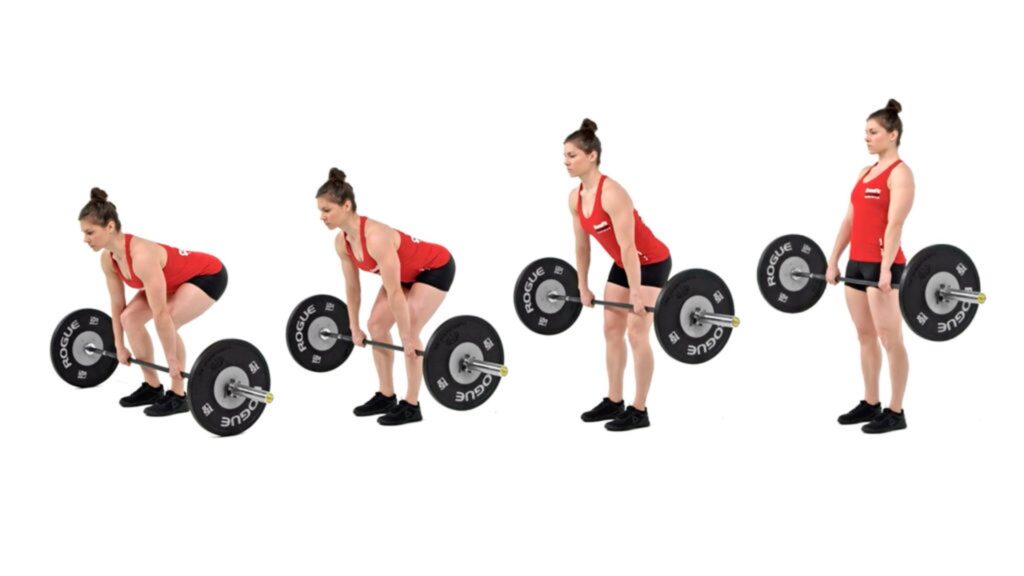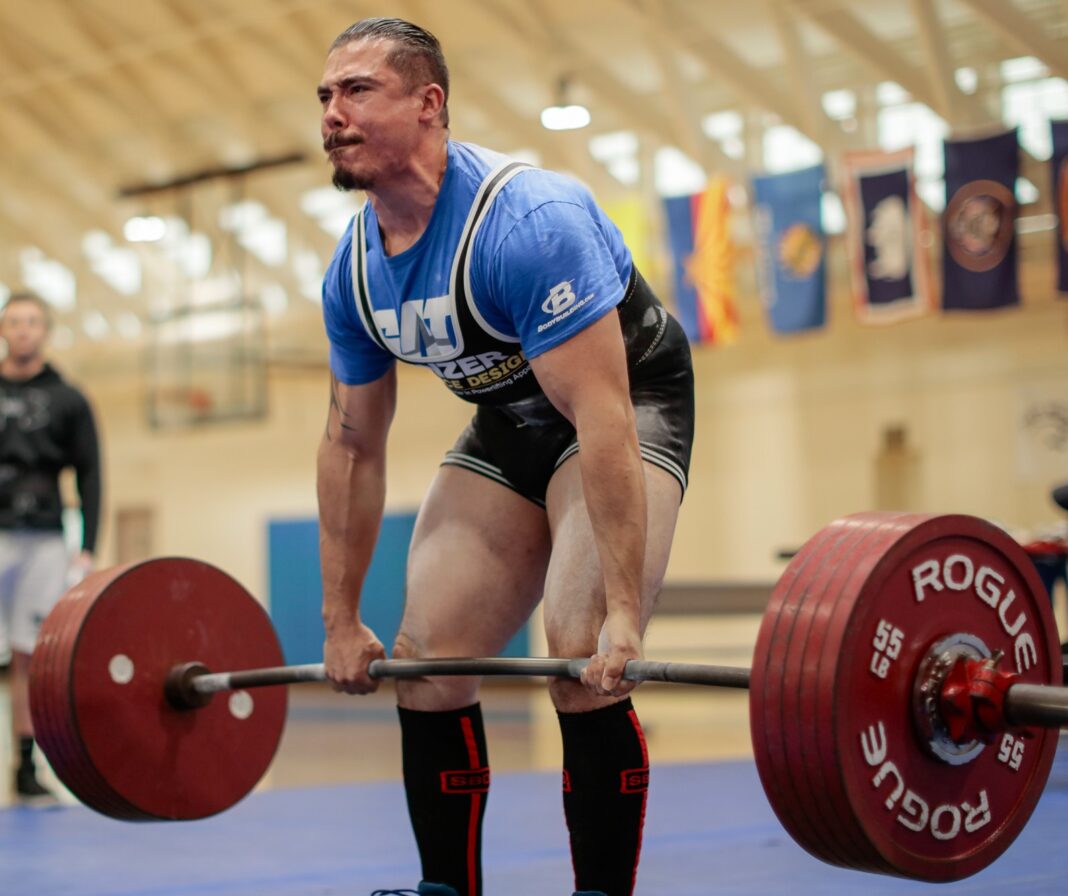Fort George G. Meade Public Affairs Office
How to deadlift properly looks simple but is actually complex. There’s a barbell on the floor and you pick it up. That’s as elemental as weightlifting gets, but this purity is deceptive. In fact, the deadlift is the most complex exercise most weight-trainers perform, because the littlest details in form can make the biggest differences in execution. Let’s learn about how to correctly raise the dead.
1. PICK A TIME.
Powerlifters usually don’t have to make a decision. Typically, they give each of the three lifts—squat, bench press, and deadlift—their own weekly workouts, hitting the primary exercise before doing secondary exercises. But for bodybuilders, it’s not so easy—or at least it shouldn’t be. Most bodybuilders do deadlifts first thing in their back workouts. In fact, a deadlift actually involves more lower body muscle activation than back activation. (This is more true of sumo deadlifts than regular deadlifts, which is addressed below.) Consider doing deads in your leg routine, starting with squats one workout and deadlifts the next. If you do deads in your back routine, slotting them last when you’ve pre-exhausted the dorsal muscles will better focus deadlifts on your back. (Dorian Yates did this while winning six Mr. Olympias in the 1990s.) Deadlifting first in your back routine is perfectly fine, but just be aware that other times may be more efficient and effective.
2. BELT UP.
With proper form, you should be able to deadlift safely without belting up. Nevertheless, a belt provides extra lower back support, keeps your waist pulled in, and reminds you to stay tight. This is a personal choice, but we recommend cinching up a belt before any working set of deadlifts.
3. TAKE A STANCE.
This is another crucial choice: regular or sumo? With a regular stance, your heels are hip-width apart and your toes are pointed only slightly outward. Before the lift, the bar should be midway between your ankles and the front of your shoes. With a sumo stance, your knees are wide apart and your toes are angled out at approximately 45 degrees. You stay more upright and range of motion is shortened. Sumo involves the lower body more and the back less than conventional deadlifts—all the more reason to do sumo deadlifts on leg days. As discussed above, regular deadlifts are a tougher call whether to do them with back or legs. Most people find it’s harder to begin pulling when doing sumo versus regular but easier to lockout. From here on, we’ll focus foremost on conventional deadlifts, though much of the advice applies to both styles. We encourage you to try both stances to see which works best for your body type and your workout needs. You can also experiment with footwear. Many deadlifters choose to pull in stocking feet to minimize the distance the bar travels.
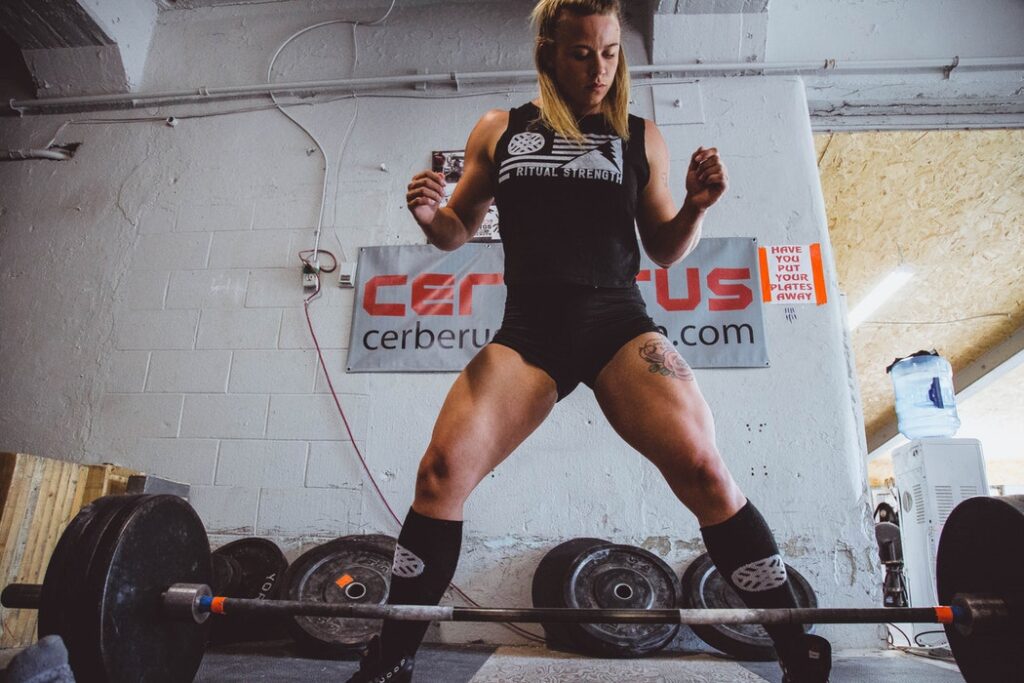
4. GET A GRIP.
If you have any aspirations to deadlift competitively in powerlifting, don’t use lifting straps. Grip strength is a crucial component of pulling a maximum dead, so if you plan to do powerlifting or you simply want to know what your best one-rep deadlift is, forget straps. Instead, use chalk and mix your grip so one hand is facing up and the other is facing down. A mixed grip is much stronger than an overhand grip. Bodybuilders with no powerlifting dreams and strongmen (which allow straps in competition) can use training straps, with or without a mixed grip. With straps, your hands should never be the weak link. As for placement, your hands should be just outside of your legs.
For much more on this see: Grip Strength: Complete Guide
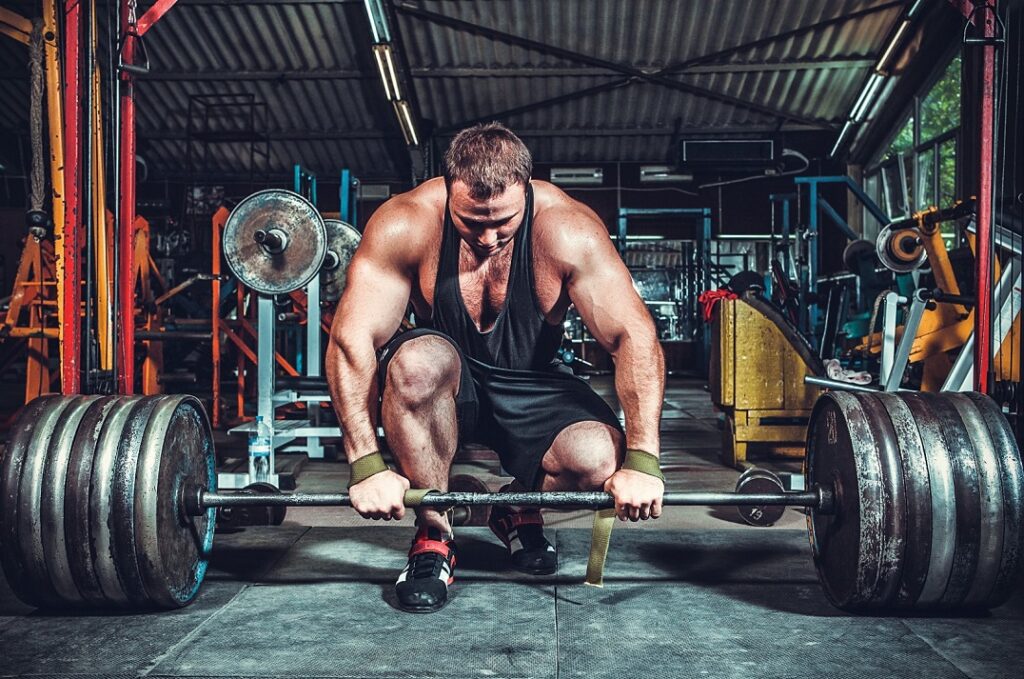
5. ARM YOURSELF.
Your arms are going to remain straight before the lift and throughout the lift. Think of them as boards with hooks (hands) on their ends. Unlocking your elbows can only create a weak link and expose you to possible injuries. Though your arms are straight, they shouldn’t hang straight down. That’s because your shoulders shouldn’t be lined up directly over the bar. Doing so sets your hips too low, turning your deadlift into more of a squat. Your shoulders should be very slightly in front of the bar with your shoulder blades over the bar. This means your arms will be angled very slightly backwards, about where a clock’s minute hand is at the 28-minute mark.
6. POSITION YOUR HIPS.
As was just mentioned, don’t set your hips too low. This is a common mistake. Novice deadlifters soon learn they’re going to generate most of their power at the launch via their lower body, so they assume going as low as possible will better propel them and the bar up. But think of the “hole” of a squat when your thighs go below parallel to the floor. Not only is that not a strong zone, that’s where squats fail. And starting there from a dead stop only makes it more of a morass. So you don’t want to go that low. But you also don’t want to have your hips so high that your back is nearly perpendicular to the floor, because then you’ll rely too much on your spinal erectors, severely weakening your deadlift and greatly increasing your odds of injury. The best position is somewhere in-between, but closer to the latter (flat back) than the former (full squat). For most people the angle from your shoulders to your butt should approximate the minute hand at the 20-minute mark (pointed at the four). That said, with experimentation, you may find that a slightly lower or slightly higher hip placement works best for you and your unique body.
7. STAY NEARLY STRAIGHT.
Another common mistake is arching your back too much at the start of the lift. Your spine should be nearly straight with just its natural curvature in the lumbar region. Don’t contract your spinal erectors and bend your back more. Even worse, don’t remove all the curvature and round your back. Both of these maladies will put you in a weaker position and expose you to back injuries. Keep your back nearly straight throughout the lift.
8. LAUNCH.
After all the positioning, you’re ready for the pull. Actually, it’s best to think of the launch as a push. Visualize yourself pushing your feet into the floor. As you push your feet down, simultaneously begin to rise up with the bar in your hands.
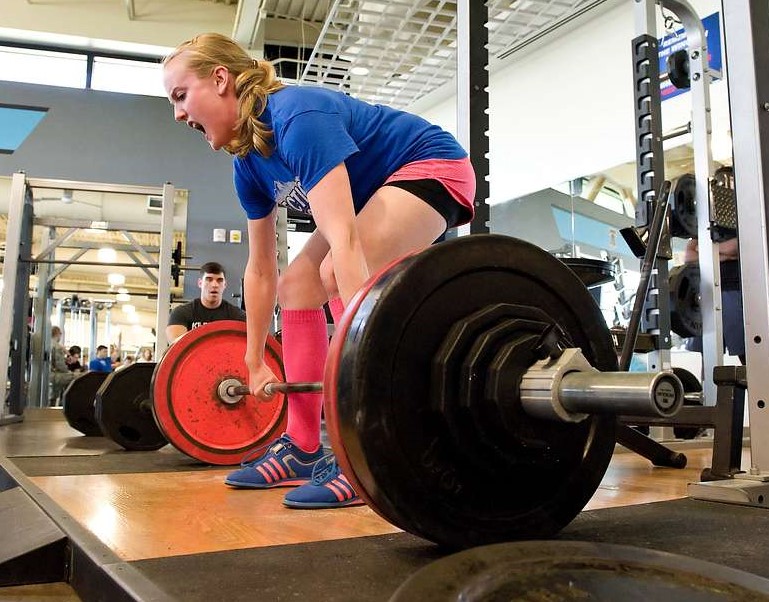
9. KEEP THE BAR CLOSE.
The bar should rub against or nearly rub against your legs throughout the lift. This will create some friction and may skin your shins (sweat pants or long socks will solve this problem), but it’s nevertheless the strongest and safest position. Conversely, if the bar is not touching the front of your legs and more than an inch away, you’ll use your lower back too much, weakening your lift and increasing your odds of a back strain.
10. DON’T WATCH YOURSELF.
Keep your head aligned with your torso. This means you’ll be looking down and forward at the beginning of the lift and straight ahead at the lockout. Never watch yourself in a mirror as a way to monitor your form. We do recommend that you check your form and make any necessary adjustments between sets or between workouts, especially when learning to deadlift. To do this, shoot your lifts from the side with a smartphone and watch the video between sets or workouts. During a lift, it’s too late to alter your form. Further, looking face-on at a mirror will distort more than clarify, and keeping your head up from start to finish can strain your neck or trapezius.
11. THRUST FORWARD.
Once the bar is at your knees, thrust your hips forward to raise the weight the rest of the way. You’ll notice that back muscles haven’t been mentioned at all when it comes to actually lifting the weight. Your spinal erectors and, to a lesser degree, your trapezius and lats will do work throughout the lift in conjunction with your legs and hips. But, as we said at the beginning, the deadlift is more of a lower body exercise than a back worker. If at any time, it becomes only a back worker because you’ve straightened your legs and thrust forward your hips before getting the weight all the way up, bail out of the lift. That’s a very weak position to be in, and, when there, the potential for a back injury is great.
12. LOCK IT OUT.
Finally, complete the lift by standing straight with your knees and hips locked and with your arms down and the bar in your hands. Don’t round your shoulders back to exaggerate the sway in your spine. Don’t shrug the bar or bounce it in any way. Just pause with the weight still.
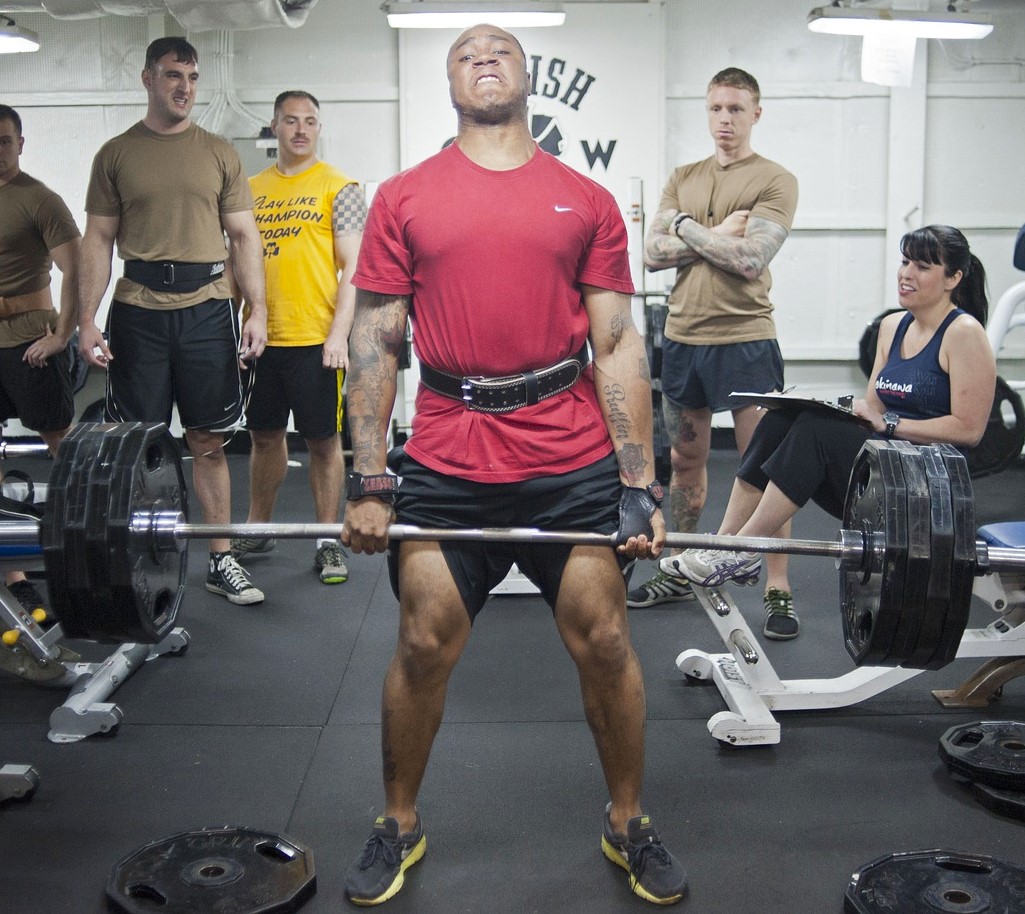
13. LET IT DOWN.
With most lifts, you don’t need instruction on how to get back to where you started. With deadlifts, you do, because if you go out of order you’re going to bang the bar against your knees or strain your back. Reverse the order of actions you did to raise the bar, though let the bar travel a little in front of your legs, not against them. Unlock your knees and let your hips retreat, and, once the bar has passed your knees, bend your knees further to allow the barbell to return to the floor. Don’t drop the bar, but don’t lower it so slowly that you feel your back working.
14. REPEAT.
Stay tight. Don’t lose your grip. Make sure the bar is again over your mid-foot and your back and hips are properly positioned. Go again. Each rep should be like the one before. If you ever fall out of the groove, stop the set. Never practice sloppy form. Practice only proper form, and strive to make it perfect.
